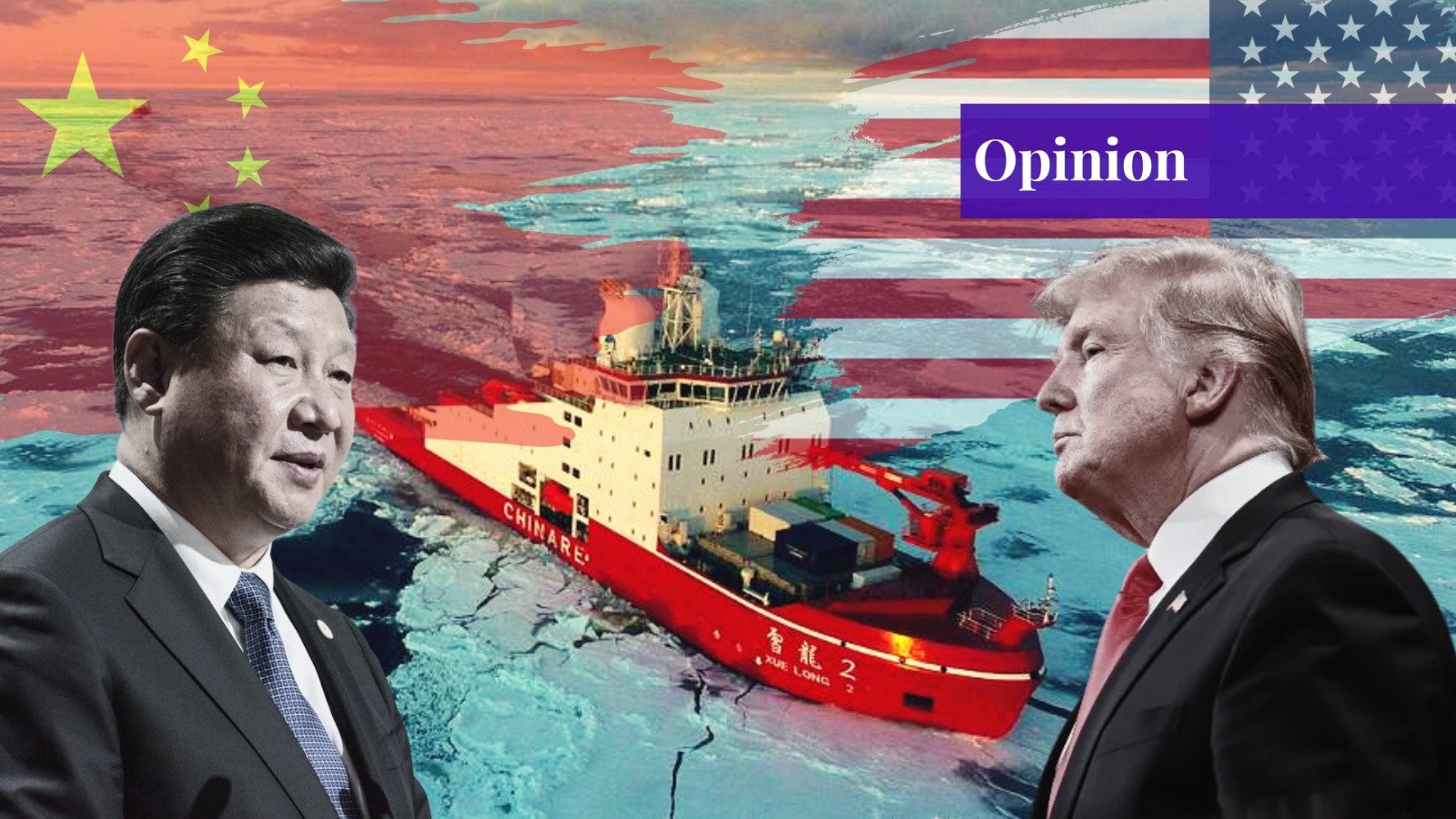For centuries, control of trade routes has influenced the destinies of empires, economies, and civilizations. As Captain Alfred Thayer Mahan once stated, “Whoever controls the seas controls the flow of wealth.” From the Ottomans controlling land and sea routes between Europe and Asia to European nations exploring sea routes around Africa to bypass Ottoman control, history has many lessons – a lesson that is now coming back to us, as trade routes transform from the Pacific to the Atlantic into contested, unsafe, and dangerous due to war, rivalries, and economic instability.
Why Trade Routes Matter
Over 80% of global trade by volume moves by sea. This includes oil from the Gulf, manufactured goods from East Asia, and grain from the Black Sea. These shipments all depend on safe maritime corridors, including key routes through the Strait of Hormuz, the South China Sea, and Bab el-Mandeb. Disruptions at these chokepoints can have ripple effects that can result in price increases, inflation, and political instability.
The Indian Ocean: The New Heart of Global Rivalry
The Indian Ocean has emerged as the most important maritime theater of our time. It facilitates the connection of Asia, the Middle East, Africa, and Europe, and facilitates one-third of the world’s bulk cargo and two-thirds of the world’s oil shipments. With serious economic heft comes strategic tension. China is extending its relevance through the development of ports in Gwadar, Hambantota, and Djibouti following a so-called “string of pearls” strategy. India perceives the ocean as its maritime backyard and is increasing its naval forces and partnerships via the QUAD, while the Americans are sticking to their naval strategy to counter China’s influence.
India’s defense minister has recently drawn attention to the fact that 95 percent of India’s trade by volume passes through the Indian Ocean, highlighting its significance. On the other hand, the UK-Mauritius agreement signed on the Chagos Islands is changing regional dynamics, with analysts warning of a renewed India-China rivalry in the region.
The South China Sea: Asia’s Flashpoint
From the Pacific to the Indian Ocean, the South China Sea remains a key artery of global commerce, and it is one of the most unstable waters in the world. China’s extensive territorial claims and militarized artificial islands contest international law and the national sovereignty of its neighbors, such as the Philippines and Vietnam. The US has responded to these activities by ratcheting up its patrols and joint exercises with the Philippines to emphasize freedom of navigation. The tensions over Taiwan also complicate the Chinese strategic calculus, particularly with the importance of the region as a node for semiconductor supply chains.
Such American involvement was visible in the April-May 2025 Balikatan exercises with 14,000 troops from the US, the Philippines, Australia, and Japan. In addition, Washington and Manila agreed to deploy advanced missile systems (NMESIS), unmanned surface vehicles, and enhanced cyber capabilities in March 2025, which signals and reflects a deeper defense partnership.
Middle Eastern Chokepoints: Hormuz & Bab el-Mandeb
The Pacific and Indian Oceans enable trade, but the world’s energy lifelines transit much narrower passages. Taken in its narrowest range, the Strait of Hormuz is 39km, and in ordinary and exceptional times, Iran is repeatedly threatened. The Bab el-Mandeb connects the Red Sea and Arabian Sea and has also become a flashpoint because of Yemen’s Houthis using drones and missiles to attack commercial vessels.
Since November 2023 alone, one hundred ships have been attacked in the Red Sea region. These include instances with high drama, such as the attacks on the bulk carriers Eternity C and Magic Seas. The sinking of both vessels between July 6 and 9, 2025, with human consequences, injuries, and illegal detentions, made the situation worse. Four crew members died on board Eternity C, and fourteen were missing via the EU’s Operation Aspides. For many shipping firms, these attacks have turned sea lanes to and from shipyards into detours around the Cape of Good Hope, changing shipping times and insurance premiums.
The First Fatal Houthi Attack: MV True Confidence
In March 2024, the bulk carrier MV True Confidence was hit by an anti-ship ballistic missile in the Gulf of Aden, killing three crew members and injuring a number of others, representing the first civilian deaths from Houthi attacks on commercial shipping. The Indian Navy coordinated rescue efforts and provided medical support and safe passage.
Historical Parallels: The Ottoman Legacy
History shows that having control or influence over trade means having global influence. European traders avoided the bottleneck issues of the Silk Road and chokepoints of the Mediterranean Sea by investing time and money into maritime exploration through the Turkish straits. An example of this would be “In The Ottoman Turks and the Routes of Oriental Trade,” Salih Özbaran tracked the impact of Ottoman control on traders’ strategies. UNESCO studies also highlight the impact of naval endeavors in the Red Sea on the balance of power in the Ottoman Empire and the spice routes. Historian David Fromkin argued in A Peace to End All Peace that losing command over trade arteries hastens a nation’s decline—an enduring dynamic when sea routes become contested.
War, Instability, Climate, and the Rising Relevance of the Arctic
Modern wars, climate change, and melting polar ice caps are forging new geopolitical realities. The war in Ukraine has reduced Black Sea grain exports. US-China tensions are rising in the South China Sea. The Red Sea is still unstable. Pirates are returning in the vicinity of the Horn of Africa. Added to all this, the Arctic is now rapidly developing as an important trade route.
A recent impact study for the US Arctic Research Commission suggested that the retreating sea ice would open Arctic routes in international waters, creating new navigable Arctic routes by 2065, creating shorter, greener shipping routes, and reducing Russia’s monopoly on the Northern Sea Route. Shipping traffic in the Arctic has increased by 37 percent from 2013 to 2023, with vessel miles doubling since 2013.
The Transpolar Sea Route, which crosses international waters, has the potential to become a major shipping route depending on changing climate, legal regimes, and geopolitical aspirations. Books such as Arctic Shipping: Climate Change, Commercial Traffic, and Port Development by Lasserre and Faury and Sustainable Shipping in a Changing Arctic provide notable and authoritative overviews of this rapidly developing frontier.
The Future of Free Trade: Globalization Under Siege
The prospect of seamless free trade, derived from safe and open seas, is under duress. Shipping lines must now grapple with increased insurance costs, longer detours, and supply chain instability. Trade may pivot from globalization to regionalization, as nations will prefer to trade with neighbors and secure corridors—an emerging trend that threatens integrated global commerce.
Avoiding US Militarization of Trade Routes
Although US naval presence in the South China Sea and Indian Ocean is typically justified by a rationale of protecting “freedom of navigation,” one cannot ignore that real-world concerns demonstrate that such military action is militarizing important trade corridors. Trade routes should be neutral spaces for commerce and cooperation, and certainly not operable for increasing great-power rivalry.
The pursuit of sole, unilateral military presence threatens escalation, stability, and cooperation on which all economies are dependent. America should work through the multilateral frameworks available to ensure all stakeholders in the region share the burdens of responsibility. This provides a real balance of power, promotes collective security, and would lower the chances of escalation in the fragile chokepoints of the global economy. Politically neutral and open sea lanes need to be protected to support the global economy.
Conclusion: Can Free Trade Survive?
From empires past to modern superpowers, the future of free trade has always been influenced by control of the seas. The Indian Ocean, South China Sea, Hormuz, Bab el-Mandeb, and the Arctic are all areas of rising contest. Today’s wars, rivalries, and increased trade in previously frozen waters have the potential to turn maritime commons into contested spaces. The future of globalization is about whether nations cooperate—or contest—over shared lifelines. Without cooperation, we will fracture trade into fragmented blocs, and the seas that once connected us will become theaters of control.
If you want to submit your articles and/or research papers, please visit the Submissions page.
To stay updated with the latest jobs, CSS news, internships, scholarships, and current affairs articles, join our Community Forum!
The views and opinions expressed in this article/paper are the author’s own and do not necessarily reflect the editorial position of Paradigm Shift.



